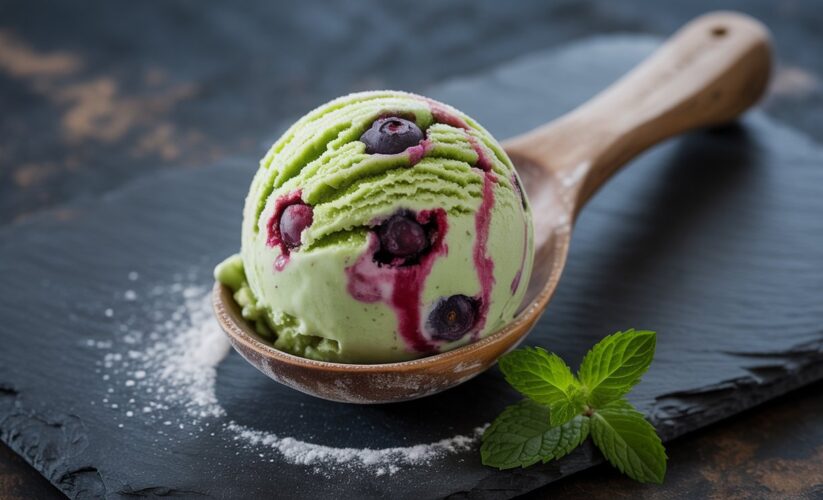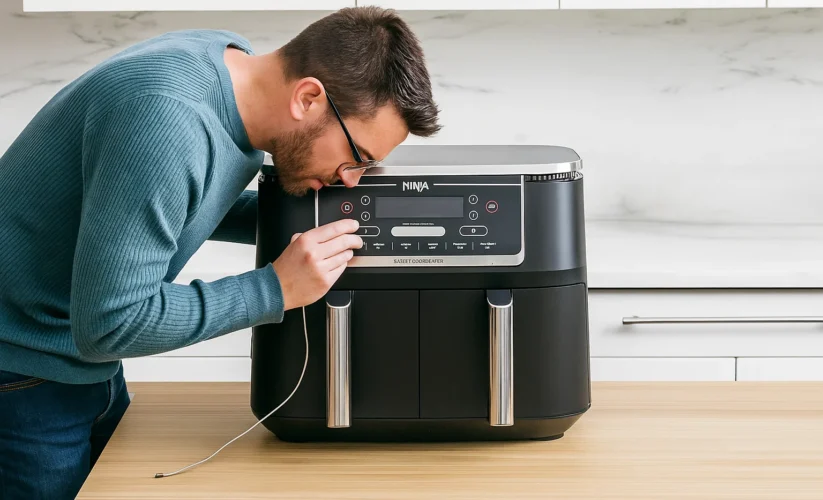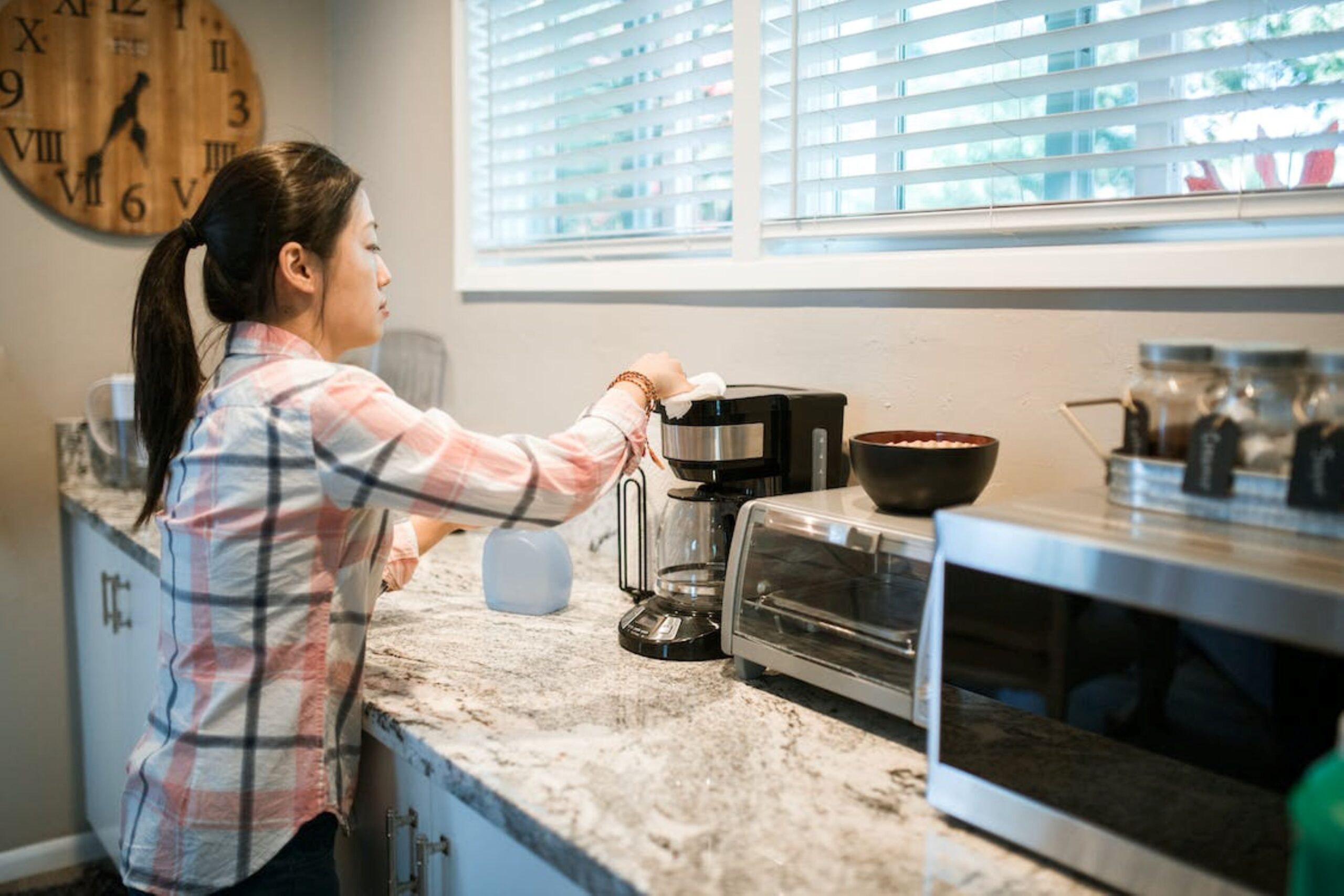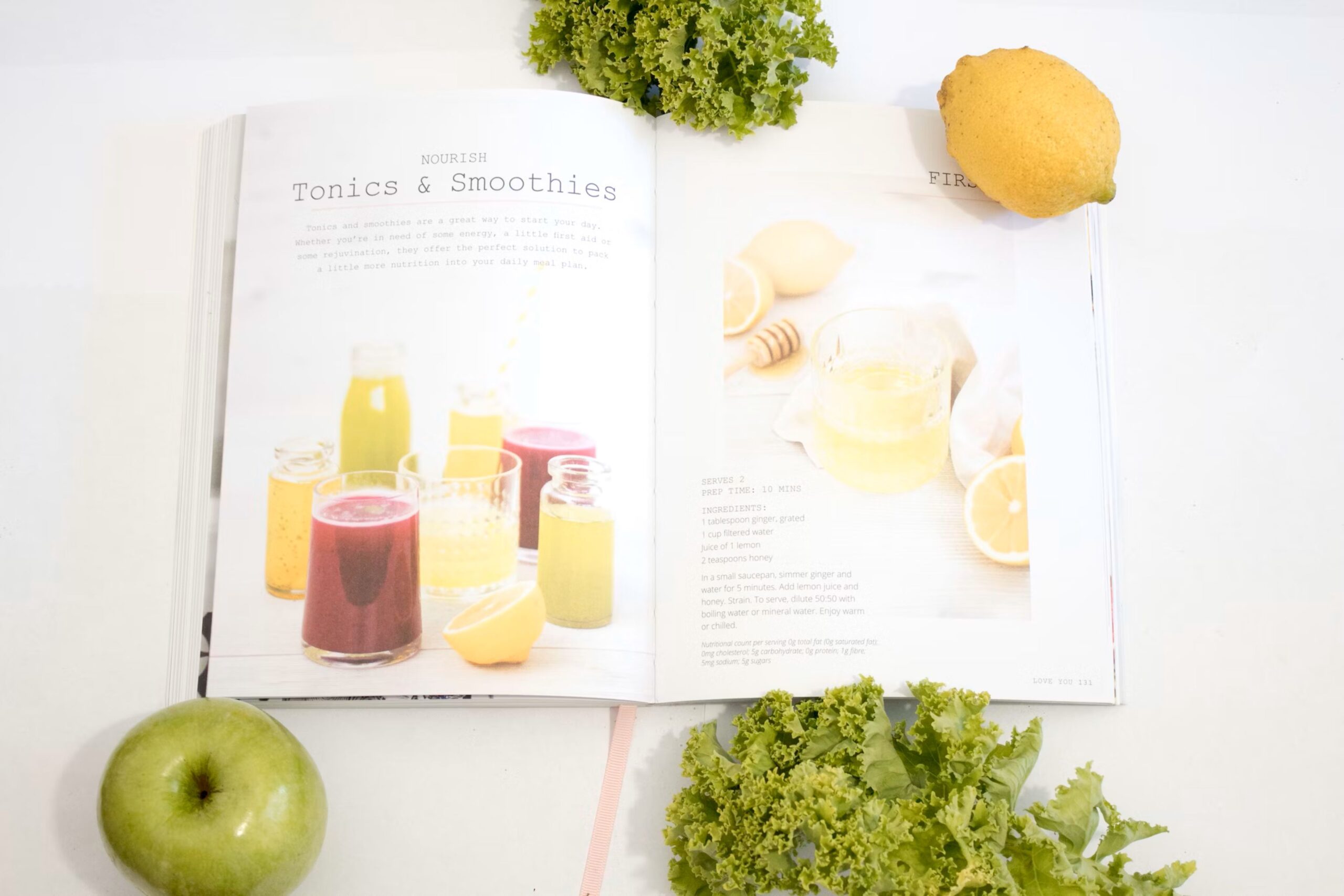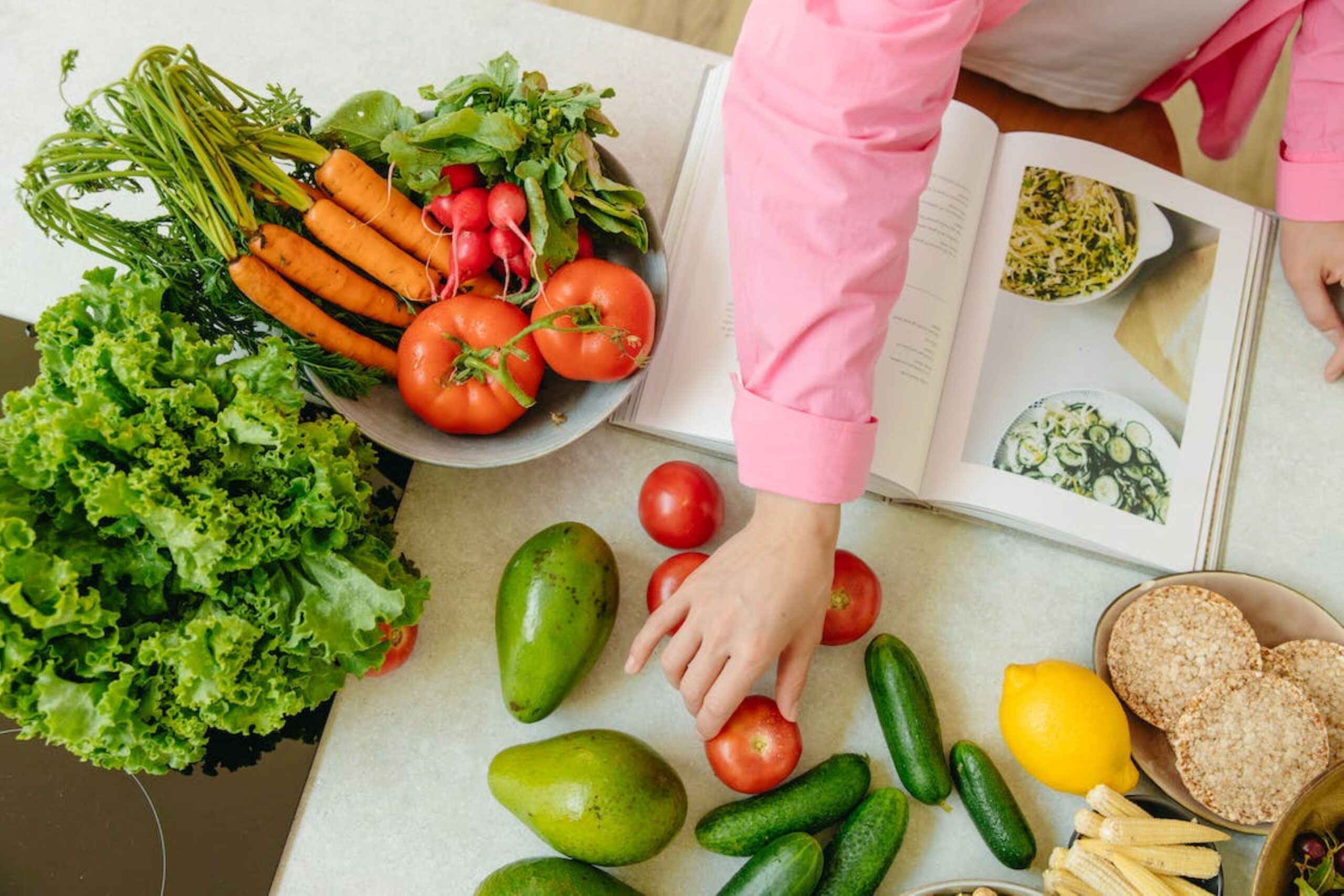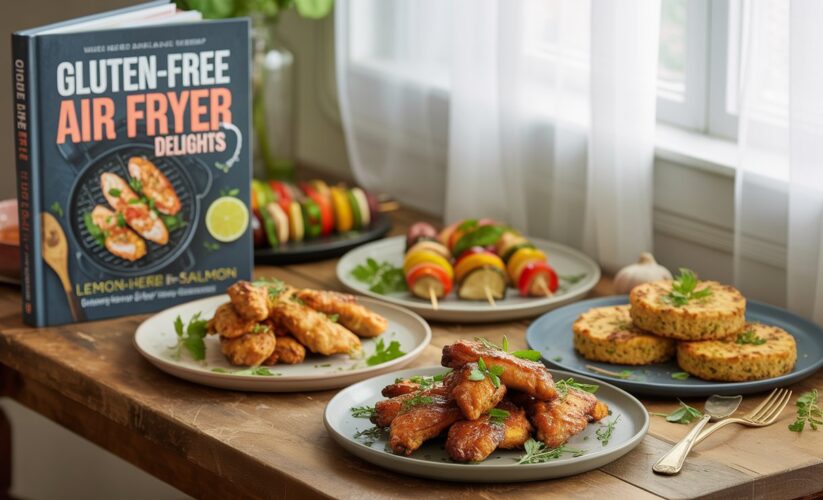
Gluten-Free Air Fryer Recipes Everyone Will Love
The kitchen fills with the gentle hum of circulating air as golden-brown vegetables emerge from the sleek appliance, their edges perfectly crispy and their centers tender. For countless home cooks navigating gluten-free living, the air fryer has become more than just a kitchen gadget, it’s a gateway to rediscovering the joy of crispy, satisfying meals without the worry of gluten contamination.
The transformation from feeling restricted by dietary limitations to embracing a world of flavorful possibilities represents a journey many gluten-free enthusiasts know well. What once seemed like an endless list of “can’t haves” has evolved into an exciting exploration of creative cooking techniques, with the air fryer leading the charge in revolutionizing how gluten-free meals are prepared and enjoyed.
This evolution in gluten-free air fryer recipes has opened doors to textures and flavors that were previously challenging to achieve. The air fryer’s unique ability to create crispy exteriors while maintaining moisture inside has solved one of the biggest hurdles in gluten-free cooking—achieving that perfect crunch without traditional wheat-based coatings.
“The air fryer has completely changed how I approach gluten-free cooking. It’s given me back the confidence to create meals that everyone at the table can enjoy, regardless of their dietary needs.”
– Gluten-Free Living Magazine
Key Takeaways
- Versatility: Air fryers excel at creating crispy gluten-free meals using alternative flours and coatings
- Health Benefits: Reduced oil usage while maintaining flavor and texture
- Time Efficiency: Faster cooking times compared to traditional oven methods
- Family-Friendly: Creates meals that satisfy both gluten-free and traditional eaters
- Easy Cleanup: Minimal mess and simple maintenance
- Consistent Results: Reliable cooking outcomes with proper technique
Recommended Ninja Air Fryer Products
1. Ninja Air Fryer Max XL
- LESS FAT: Up to 75% less fat than traditional air frying methods. Tested against hand-cut, deep-fried French fries.
- MAX CRISP TECHNOLOGY: Delivers 450 degrees of superheated air to cook foods up to 30 % faster (Versus Ninja AF100) for hotter, crispier results with little to no oil for guilt free fried favorites.
- XL CAPACITY: The 5.5 QT ceramic coated nonstick basket and crisper plate fit 3 pounds of french fries or chicken wings.
| Pros | Cons |
|---|---|
| High Capacity: The 5.5 QT basket fits large portions—great for families or batch cooking gluten-free meals. Crisping Power: Max Crisp Technology cooks faster and hotter—ideal for gluten-free recipes that need crunch. Versatile Use: With 7 cooking modes, you can easily air fry, bake, reheat, and dehydrate gluten-free ingredients. | Bulky Design: At nearly 15 inches deep, it may take up more counter space than smaller models. Loud Operation: The fan can be noticeably noisy during high-temp cooking. Plastic Exterior: While durable, the plastic housing might not appeal to those looking for stainless steel finishes. |
If you’re exploring gluten-free air fryer recipes, the Ninja Max XL Air Fryer is one of the best appliances to have in your kitchen. With its generous 5.5-quart capacity and advanced Max Crisp Technology, it delivers perfect results for gluten-free snacks and meals, from crispy chickpeas and roasted vegetables to chicken tenders and flourless brownies. This air fryer supports healthier cooking with up to 75% less fat, and the nonstick ceramic basket ensures easy release even with sticky gluten-free batters. Whether you’re newly gluten-free or a long-time coeliac home cook, this all-in-one air fryer makes gluten-free cooking more enjoyable and efficient.
2. Ninja Combi All-in-One Multicooker
- 14-in-1 VERSATILITY: Combi Meals, Combi Crisp, Combi Bake, Rice/Pasta, Sear/Sauté, Steam, Bake, Toast, Pizza, Slow Cook, Proof, Sous Vide, Air Fry, Broil.
- COMPLETE MEALS THAT COOK IN 15 MINS: Cook your proteins, veggies, and pasta or grains all at the same time and make a meal 50% faster than in a wall oven.
- ONE STOP SHOP IN YOUR KITCHEN: With its all-in-one functionality and included accessories, the Ninja Combi is the only appliance you will ever need—no more cluttered countertops and endless piles of dishes to clean afterward.
| Pros | Cons |
|---|---|
| Multi-Functionality: 14 cooking modes cover everything from air frying to sous vide, perfect for diverse gluten-free recipes. Fast Cooking: Complete gluten-free meals in just 15 minutes—ideal for weeknight dinners. Family-Friendly Size: Easily feeds up to 8 people, with room for large roasts or bulk gluten-free meal prep. | Heavy & Bulky: Weighs over 20 lbs and requires significant counter space. Learning Curve: The wide range of functions may be overwhelming for first-time users. Price Point: Premium price may not suit casual cooks or smaller households. |
Looking for a single appliance that can handle all your gluten-free air fryer recipes and more? The Ninja Combi All-in-One Multicooker, Oven, and Air Fryer is the perfect solution. With its 14-in-1 cooking modes, including Air Fry, Combi Crisp, Bake, Sear/Sauté, and Steam, it takes the guesswork out of preparing gluten-free meals. Its HyperSteam and rapid air circulation technology ensure your gluten-free dishes are evenly cooked and perfectly crisp, from breaded chicken to grain-free pizzas. Ideal for large families or serious home chefs, the Ninja Combi’s generous capacity and fast cook times mean you can go from frozen to table in under 30 minutes, no thawing needed. Whether you’re batch cooking for a coeliac household or exploring gluten-free living, this versatile multicooker will quickly become your go-to kitchen companion.
3. Ninja Foodi 10QT DualZone Smart XL Air Fryer
- 2 FOODS, 2 WAYS, AT THE SAME TIME: Eliminating back-to-back cooking like a traditional single-basket air fryer with 2 independent XL air fryer baskets.
- SMART COOK SYSTEM: Achieve the perfect doneness, from rare to well-done, at the touch of a button with the integrated Foodi Smart Thermometer—no guesswork required.
- DUALZONE TECHNOLOGY: The Smart Finish feature, unlocks cooking 2 foods 2 ways that finish at the same time, or the Match Cook feature, easily copies settings across zones for full 10-qt. capacity.
| Pros | Cons |
|---|---|
| Dual Cooking Zones: Cook two separate gluten-free dishes at once—no flavour cross-contamination or wait time. Smart Thermometer: Ensures meats and proteins reach perfect doneness, which is crucial for gluten-free food safety. Large Capacity: With 10 quarts total, it’s ideal for batch cooking or large coeliac-friendly family meals. | Bulky Footprint: Its size and dual-basket design require significant countertop space. Learning Curve: Multiple features and functions may overwhelm first-time users. No Rotating Basket: Unlike some models, it lacks a rotating feature for extra-even crisping. |
If you’re preparing gluten-free air fryer recipes for a family or weekly meal prep, the Ninja Foodi DualZone Smart XL Air Fryer (DZ550) is a game-changer. With two 5-quart baskets, you can cook two completely different gluten-free dishes at once, say, air-fried salmon in one and roasted sweet potatoes in the other. The Smart Finish feature lets both finish cooking at the same time, while the Foodi Smart Thermometer ensures your proteins are cooked safely and precisely, especially important for gluten-free diets. Whether you’re air frying, baking, or reheating, this 6-in-1 appliance delivers crispy, delicious results with no cross-contamination. It’s perfect for coeliac households or anyone experimenting with gluten-free living.
4. Ninja Foodi XL Pro Air Fryer
- MAX CRISP TECHNOLOGY: Delivers up to 450°F of superheated air for faster, hotter, and extra-crispy results using little to no oil—perfect for fries, wings, and more. Achieve that golden crunch with rapid air circulation.
- Guilt-Free, Healthy Fried Foods: Enjoy the indulgence of fried food with up to 75% less fat compared to traditional deep frying. Tested against hand-cut, deep-fried French fries for proven healthier results.
- XL Capacity Air Fryer: The 6.5-quart nonstick basket and crisper plate hold up to 5 lbs. of French fries or 9 lbs. of chicken wings ideal for family meals, game day, and meal prepping.
| Pros | Cons |
|---|---|
| Powerful Crisping: 450°F Max Crisp Technology ensures gluten-free foods come out hot and crunchy every time. Large Capacity: The 6.5 QT basket fits up to 9 lbs of wings—great for entertaining or weekly meal prep. Easy to Clean: Nonstick, dishwasher-safe basket and crisper plate simplify post-meal cleanup. | No Dual Basket: Single-basket design limits ability to cook multiple foods simultaneously. No Viewing Window: Can’t visually check food without opening the fryer. Short Cord: May limit placement options in smaller kitchens. |
If you’re searching for a reliable, high-performance appliance for your favourite gluten-free air fryer recipes, the Ninja Air Fryer Pro XL 6.5QT (AF181) delivers on both capacity and cooking precision. With its Max Crisp Technology reaching 450°F, this model is ideal for gluten-free breaded dishes, veggie snacks, and frozen items that need extra crunch without extra oil. Its spacious 6.5-quart basket accommodates large batches—perfect for families following a gluten-free diet or anyone cooking in bulk. Easy to clean, simple to use, and versatile across six functions, this air fryer proves that gluten-free cooking doesn’t have to mean sacrificing texture or flavour.
The Gluten-Free Air Fryer Recipes Revolution
Understanding the Perfect Partnership
The relationship between gluten-free cooking and air fryer technology represents a match made in culinary heaven. Traditional gluten-free recipes often struggle with texture issues—batters that don’t crisp properly, coatings that fall off, or results that lack the satisfying crunch that makes food appealing. The air fryer’s rapid air circulation technology addresses these challenges head-on.
When gluten-free air fryer recipes flours meet the intense, circulating heat of an air fryer, magic happens. Almond flour transforms into golden, crispy coatings. Coconut flour creates surprisingly light and airy textures. Rice flour develops a satisfying crunch that rivals traditional wheat-based preparations. This transformation occurs because the air fryer’s technology works differently than conventional cooking methods, creating an environment where gluten-free ingredients can truly shine.
The Science Behind Success
The success of gluten-free air fryer recipes lies in understanding how different ingredients behave under rapid air circulation. Unlike traditional frying or baking, the air fryer creates a convection environment that rapidly removes moisture from food surfaces while sealing in internal moisture. This process is particularly beneficial for gluten-free ingredients, which often struggle with moisture retention and surface crisping.
Gluten-free flours contain different proteins and starches than wheat flour, requiring different approaches to achieve optimal results. The air fryer’s consistent temperature and air circulation help activate these alternative proteins more effectively, creating better binding and more appealing textures.
Essential Gluten-Free Air Fryer Techniques
Mastering Alternative Flours
Almond Flour Applications: This nutrient-dense flour excels in air fryer applications due to its natural fat content. When used as a coating, almond flour creates exceptionally crispy exteriors with a subtle nutty flavor. The key lies in seasoning the flour well and ensuring food surfaces are properly prepared for adherence.
Coconut Flour Considerations: Highly absorbent coconut flour requires careful moisture management. In air fryer applications, it works best when combined with other ingredients to create balanced coatings. Its natural sweetness pairs beautifully with both savory and sweet preparations.
Rice Flour Versatility: Perhaps the most versatile gluten-free flour for air fryer use, rice flour creates light, crispy textures without overwhelming food flavors. Its neutral taste makes it ideal for both Asian-inspired dishes and traditional Western preparations.
Binding Techniques for Success
Creating cohesive coatings without gluten requires understanding alternative binding methods. Eggs serve as the primary binding agent in most gluten-free air fryer recipes, but plant-based alternatives like aquafaba (chickpea liquid) or ground flaxseed mixed with water can achieve similar results.
The three-step coating process becomes crucial in gluten-free air fryer cooking: first, a light dusting of flour to help subsequent layers adhere; second, a moisture layer (egg, buttermilk, or plant-based alternative); and finally, the seasoned coating mixture. This methodical approach ensures coatings stay attached during the air frying process.
Transformative Recipe Categories
Protein Perfection
Crispy Chicken Alternatives: Using a combination of almond flour, parmesan cheese, and carefully selected seasonings creates chicken coatings that rival traditional breaded versions. The air fryer’s intense heat activates the proteins in both the chicken and the coating, creating a golden, crispy exterior while maintaining juicy interiors.
Fish and Seafood Success: Delicate fish fillets benefit tremendously from air fryer cooking when properly coated with gluten-free alternatives. A light rice flour dusting followed by seasoned almond flour creates restaurant-quality results in minutes rather than the extended cooking times required by traditional methods.
Plant-Based Proteins: Tofu, tempeh, and plant-based protein alternatives achieve remarkable textures in the air fryer. The rapid air circulation helps remove excess moisture while creating appealing surface textures that make these proteins more satisfying for all diners.
Vegetable Transformations
Root Vegetable Revelations: Sweet potatoes, regular potatoes, and other root vegetables develop incredibly satisfying textures in the air fryer. Light coating with gluten-free flour and seasonings creates crispy exteriors while maintaining creamy interiors.
Cruciferous Vegetable Creativity: Cauliflower, broccoli, and Brussels sprouts become entirely new experiences when air-fried with gluten-free coatings. These vegetables’ natural sugars caramelize beautifully under the intense heat, creating complex flavors that appeal to even the most dedicated carnivores.
Zucchini and Summer Squash Solutions: These high-moisture vegetables present unique challenges that the air fryer addresses effectively. Proper preparation techniques, including salting and patting dry, combined with appropriate gluten-free coatings, create satisfying alternatives to traditional fried vegetables.
Overcoming Common Challenges
Addressing Texture Expectations
Many home cooks initially struggle with adjusting their texture expectations when transitioning to gluten-free air fryer cooking. The key lies in understanding that different doesn’t mean inferior—it means discovering new and often superior flavor and texture combinations.
Moisture Management: Gluten-free ingredients often behave differently regarding moisture absorption and retention. Learning to work with these characteristics rather than against them leads to better results. This might mean adjusting cooking times, temperatures, or preparation techniques.
Coating Adhesion: Without gluten’s natural binding properties, creating coatings that stay attached requires different approaches. Success comes from understanding how to create proper surface preparation and using appropriate binding agents.
Equipment Optimization
Temperature Control: Different gluten-free ingredients respond optimally to different temperature ranges. Understanding these preferences helps achieve consistent results. Generally, slightly lower temperatures for longer periods work better than high heat for short bursts.
Timing Adjustments: Gluten-free coatings often require different cooking times than traditional recipes. Learning to recognize visual and textural cues becomes more important than strict adherence to timing guidelines.
Batch Cooking Strategies: Air fryers work best when not overcrowded. Developing efficient batch cooking strategies ensures consistent results while maintaining food quality.
Flavor Development Strategies
Seasoning Mastery
Pre-Seasoning Techniques: Marinating proteins and vegetables before coating allows flavors to penetrate deeply. This becomes particularly important with gluten-free coatings, which may have different flavor profiles than traditional breadings.
Layered Flavor Building: Creating complex flavors requires understanding how different seasonings interact with gluten-free ingredients. Some spices work better mixed into coatings, while others should be applied to food surfaces before coating.
Finishing Touches: The final seasoning applied after air frying can elevate dishes significantly. Fresh herbs, citrus zest, and finishing salts create restaurant-quality results that impress all diners.
Sauce and Dip Pairings
Gluten-Free Sauce Considerations: Many traditional sauces contain gluten, making homemade alternatives necessary. The air fryer’s ability to create crispy foods makes these sauces more important for providing moisture and flavor contrast.
Texture Contrasts: Pairing crispy air-fried foods with creamy, tangy, or fresh accompaniments creates more satisfying eating experiences. Understanding these contrasts helps create complete meals rather than just individual dishes.
Nutritional Advantages
Health Benefits of Air Frying
The air fryer’s ability to create crispy foods with minimal oil usage provides significant health advantages. This becomes particularly important for those following gluten-free diets, who may already be dealing with digestive sensitivities or other health concerns.
Reduced Oil Consumption: Traditional frying methods require substantial amounts of oil, which can be problematic for those with sensitive digestive systems. Air frying achieves similar results with minimal oil, reducing caloric content while maintaining satisfaction.
Nutrient Preservation: The shorter cooking times and lower temperatures used in air frying help preserve more nutrients than traditional cooking methods. This becomes particularly important when working with nutrient-dense gluten-free ingredients like almond flour and coconut flour.
Digestive Considerations
Easier Digestion: The air fryer’s ability to create satisfying textures without excessive oil can make gluten-free meals easier to digest. This becomes particularly important for those with sensitive digestive systems or other food sensitivities.
Portion Control: The air fryer’s efficiency makes it easier to prepare appropriate portions, which can be beneficial for those managing weight or other health concerns alongside gluten-free dietary requirements.
Creating Inclusive Dining Experiences
Family-Friendly Strategies
Universal Appeal: The goal of gluten-free air fryer cooking extends beyond accommodating dietary restrictions—it’s about creating meals that everyone genuinely enjoys. This requires understanding how to balance flavors and textures that appeal to diverse palates.
Customization Options: Air fryers excel at creating base recipes that can be customized for different family members. This flexibility allows for accommodating various preferences while maintaining efficiency in meal preparation.
Kid-Friendly Approaches: Children often respond well to crispy, golden foods. The air fryer’s ability to create appealing textures with gluten-free ingredients makes it easier to introduce children to dietary changes without resistance.
Entertainment and Social Aspects
Party and Gathering Solutions: Air fryers make it possible to create impressive appetizers and snacks that accommodate gluten-free guests without making them feel excluded. The ability to prepare multiple batches quickly makes entertaining more manageable.
Shared Cooking Experiences: The air fryer’s user-friendly nature makes it possible to involve family members or guests in food preparation, creating shared experiences around cooking and eating.
Seasonal Adaptation Strategies
Spring and Summer Approaches
Light and Fresh Combinations: Warmer weather calls for lighter preparations that showcase seasonal vegetables. The air fryer’s ability to create crispy textures without heavy coatings makes it ideal for spring and summer cooking.
Outdoor Entertainment: The air fryer’s portability and efficiency make it excellent for outdoor gatherings where traditional cooking methods might be impractical.
Fall and Winter Comfort
Hearty Preparation Methods: Cooler weather demands more substantial, comforting foods. The air fryer excels at creating satisfying, warming dishes that provide comfort without compromising gluten-free requirements.
Holiday Adaptations: Special occasions often present challenges for those following gluten-free diets. The air fryer provides solutions for creating traditional holiday foods with gluten-free adaptations that maintain festive appeal.
Advanced Techniques and Innovation
Combination Cooking Methods
Multi-Stage Preparations: Advanced air fryer techniques involve combining air frying with other cooking methods to achieve complex textures and flavors. This might include pre-steaming vegetables before air frying or finishing dishes under the broiler.
Temperature Manipulation: Understanding how to adjust temperatures during cooking allows for more complex texture development. Starting at higher temperatures to set coatings, then reducing heat to finish cooking, creates superior results.
Creative Ingredient Applications
Unexpected Coating Materials: Innovation in gluten-free air fryer cooking involves exploring non-traditional coating materials. Crushed nuts, seeds, and even gluten-free cereals can create interesting textures and flavors.
Fusion Cuisine Approaches: The air fryer’s versatility makes it ideal for fusion cuisine applications, combining gluten-free ingredients with flavors from various culinary traditions.
Maintenance and Longevity
Equipment Care
Cleaning Strategies: Proper maintenance ensures consistent results and extends equipment life. Understanding how different gluten-free ingredients affect cleaning requirements helps maintain optimal performance.
Troubleshooting Common Issues: Recognizing and addressing common problems early prevents more significant issues and ensures continued success with gluten-free air fryer cooking.
Ingredient Storage and Management
Flour Storage Solutions: Gluten-free flours require different storage considerations than traditional wheat flour. Understanding these requirements ensures ingredients remain fresh and effective.
Contamination Prevention: For those with celiac disease or severe gluten sensitivity, preventing cross-contamination requires specific protocols and awareness.
Building Confidence and Community
Skill Development Progression
Starting Simple: Beginning with basic recipes and gradually progressing to more complex preparations builds confidence and skills systematically. This approach prevents overwhelming beginners while ensuring solid foundational understanding.
Experimentation Encouragement: Once basic techniques are mastered, experimentation becomes the path to personalized recipe development. Understanding principles rather than just following recipes leads to greater cooking satisfaction.
Sharing and Connection
Community Building: The gluten-free cooking community benefits from shared experiences and recipe exchanges. Air fryer cooking provides common ground for connection and mutual support.
Teaching Others: Sharing knowledge and techniques helps build a supportive network while reinforcing personal learning. Teaching others about gluten-free air fryer cooking creates positive ripple effects in communities.
Looking Forward: Future Possibilities
Emerging Trends
Ingredient Innovation: New gluten-free ingredients and products continue to emerge, providing more options for air fryer applications. Staying informed about these developments opens new possibilities for creative cooking.
Technology Advancement: Air fryer technology continues to evolve, with new features and capabilities that enhance gluten-free cooking possibilities. Understanding these advances helps optimize cooking results.
Sustainable Practices
Environmental Considerations: The air fryer’s energy efficiency and reduced oil usage align with environmentally conscious cooking practices. This becomes particularly important as awareness of environmental impact grows.
Local and Seasonal Focus: Combining air fryer techniques with local, seasonal ingredients creates more sustainable and flavorful cooking approaches while supporting local food systems.
Conclusion
The journey from viewing gluten-free cooking as limiting to embracing it as liberating represents a fundamental shift in perspective. The air fryer serves as a catalyst for this transformation, providing the tools and techniques necessary to create satisfying, flavorful meals that happen to be gluten-free rather than meals that feel restricted by dietary requirements.
This evolution in cooking approach benefits everyone, not just those following gluten-free diets. The techniques and flavor combinations developed through gluten-free air fryer cooking often prove superior to traditional methods, creating more interesting and healthful meals for all family members.
The air fryer’s ability to create crispy, satisfying textures with minimal oil while working beautifully with gluten-free ingredients represents a perfect convergence of health consciousness, dietary accommodation, and culinary satisfaction. As more people discover these techniques, the boundaries between “regular” and “gluten-free” cooking continue to blur, creating a more inclusive and innovative culinary landscape.
Success in gluten-free air fryer cooking comes not from following rigid rules but from understanding principles and adapting them to personal preferences and circumstances. This flexibility ensures that the techniques remain relevant and useful regardless of changing dietary needs or lifestyle circumstances.
The transformation from seeing dietary restrictions as obstacles to viewing them as opportunities for creativity and innovation represents a powerful shift in mindset. The air fryer provides the perfect tool for facilitating this transformation, creating possibilities that extend far beyond simple ingredient substitutions.
As families gather around tables filled with golden, crispy foods that everyone can enjoy regardless of their dietary needs, the true value of gluten-free air fryer cooking becomes clear. It’s not about accommodation—it’s about creating better, more inclusive, and more satisfying meals for everyone.
Frequently Asked Questions
Q: Do I need to use special gluten-free flours for air fryer cooking, or can I use regular flour substitutes?
A: While you can use any gluten-free flour blend, certain types work better in air fryers. Almond flour creates exceptionally crispy coatings, rice flour provides light textures, and coconut flour works well when combined with other ingredients. The key is understanding how each flour behaves under rapid air circulation to achieve optimal results.
Q: How do I prevent gluten-free coatings from falling off during air frying?
A: Proper coating adhesion requires a three-step process: first, lightly dust food with flour; second, apply a moisture layer (egg, buttermilk, or plant-based alternative); and finally, apply the seasoned coating mixture. Ensure each layer adheres properly before moving to the next step, and avoid overcrowding the air fryer basket.
Q: Can I prepare gluten-free air fryer meals in advance, and how should I store them?
A: Yes, many gluten-free air fryer preparations can be made ahead. Coated items can be prepared and refrigerated for up to 24 hours before cooking. For best results, place coated foods on parchment-lined trays and cover lightly. Cooked items should be stored in the refrigerator and can be reheated in the air fryer at 350°F for 2-3 minutes to restore crispiness.
Q: Are there specific temperature and timing adjustments needed for gluten-free ingredients compared to traditional recipes?
A: Gluten-free ingredients often cook slightly faster than traditional counterparts due to different moisture content and protein structures. Start with temperatures 25°F lower than traditional recipes and check for doneness 2-3 minutes earlier. Visual cues like golden browning and internal temperature are more reliable than strict timing guidelines.
Q: What’s the best way to clean an air fryer after cooking with gluten-free ingredients to prevent cross-contamination?
A: For those with celiac disease or severe gluten sensitivity, thorough cleaning is essential. Remove all removable parts and wash with hot, soapy water. Wipe down all interior surfaces with a damp cloth, paying special attention to crevices where flour particles might collect. Some people prefer to designate specific air fryer baskets for gluten-free cooking only to eliminate any contamination risk.
Last update on 2025-12-27 / Affiliate links / Images from Amazon Product Advertising API
*We may earn a commission for purchases made using our links. Please see our disclosure to learn more.





